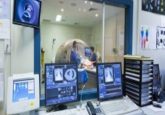Cost–effectiveness of endobronchial percutaneous biopsy compared with transthoracic biopsy for diagnosis of peripheral lung lesions

Aim: This study compares the cost–effectiveness of radial endobronchial ultrasound (R-EBUS; Olympus Medical Systems Group, Tokyo, Japan) and electromagnetic navigation (ENB) to transthoracic needle biopsy (TTNB) to attain a confirmative diagnosis of the suspect lung lesions(s). Methods: The National Lung Screening Trial enrolled over 50,000 people aged 55–74 years with at least a 30-pack/year smoking history, in fairly good health and not symptomatic of lung disease. The study found low-dose computed tomography of the chest resulted in a 20% lower chance of dying from lung cancer compared with those who had chest x-rays. Approximately 25% of the low-dose computed tomography-screened patients had a positive screen requiring confirmation of the lung lesion. Using an estimate of 5.2 million annual chest CT scans in the USA as a basis for the number of patients seeking a confirmative result before being recommended for surgery for possible benign lung lesions our study seeks to identify the most cost-effective biopsy protocol to reduce costs, and deliver improved diagnostic accuracy. Results: Modeling 200 representative patients assigned to; TTNB, bronchoscopy, or R-EBUS-/ENB-enabled endobronchial percutaneous (Endo-Perc) when comparing procedure costs, insurance payment and clinical outcomes the Endo-Perc procedure resulted in the most cost-effective option to biopsy the suspect lung lesion. The lower adverse event profile of pneumothorax and reduced cost the Endo-Perc procedure resulted in a gain of US$130,464 compared with a loss of US$562,863 for TTNB, or a loss of US$103,487 for bronchoscopy. Conclusion: Our findings suggest combining R-EBUS with ENB delivers a high-diagnostic yield at a lower cost owing to the lower risk of a pneumothorax when compared with transthoracic lung biopsy.
Click here to view full article



